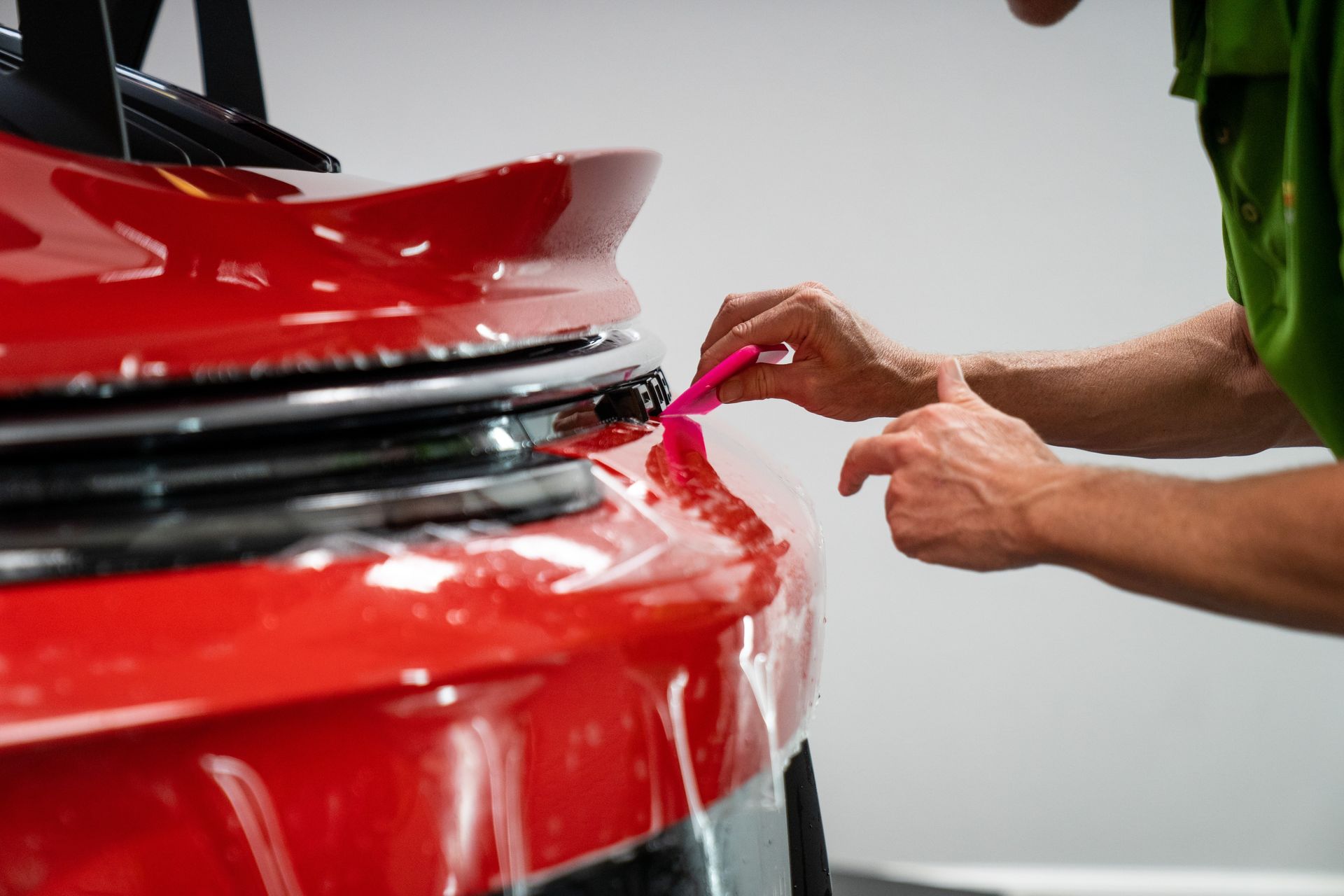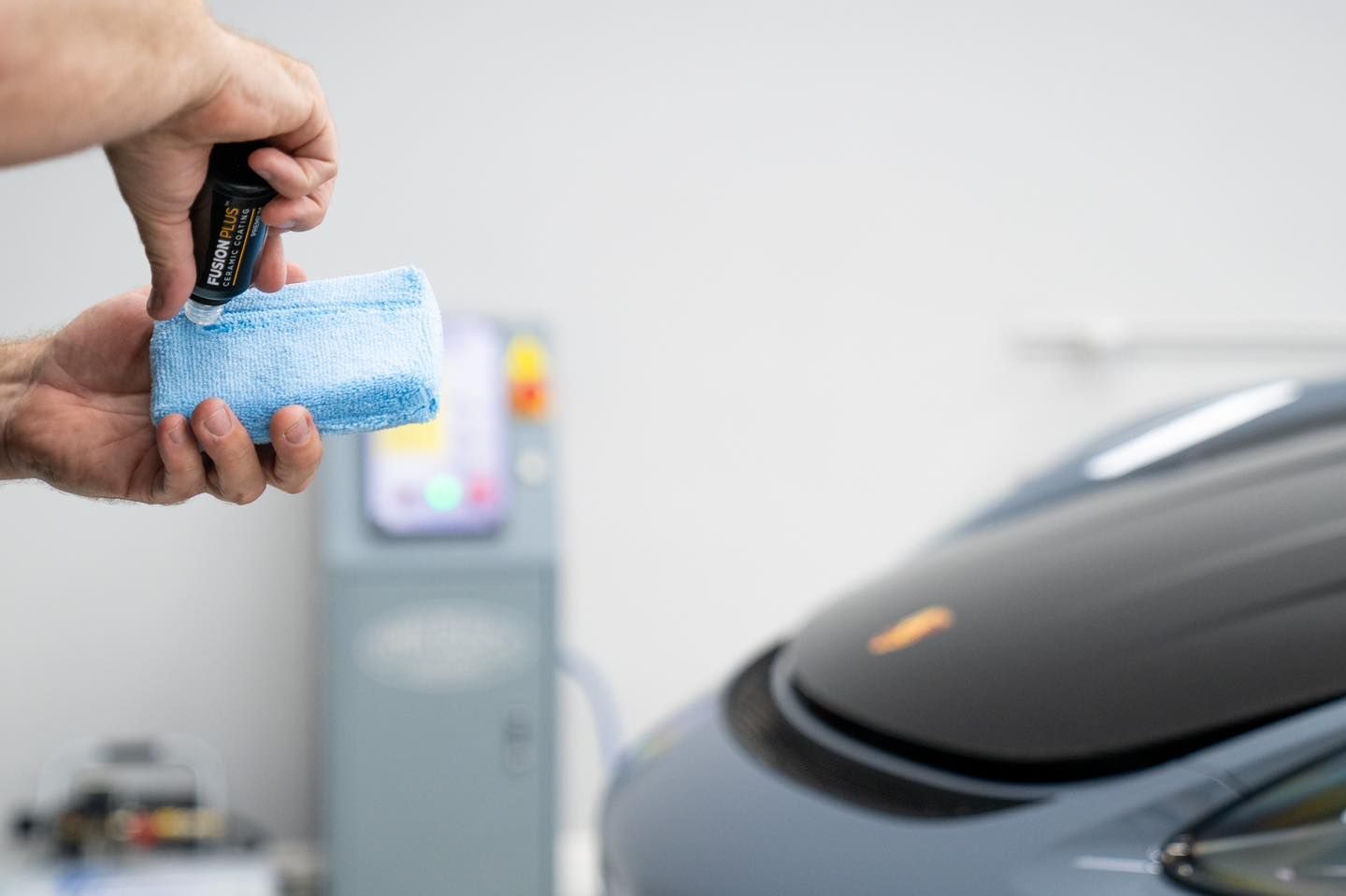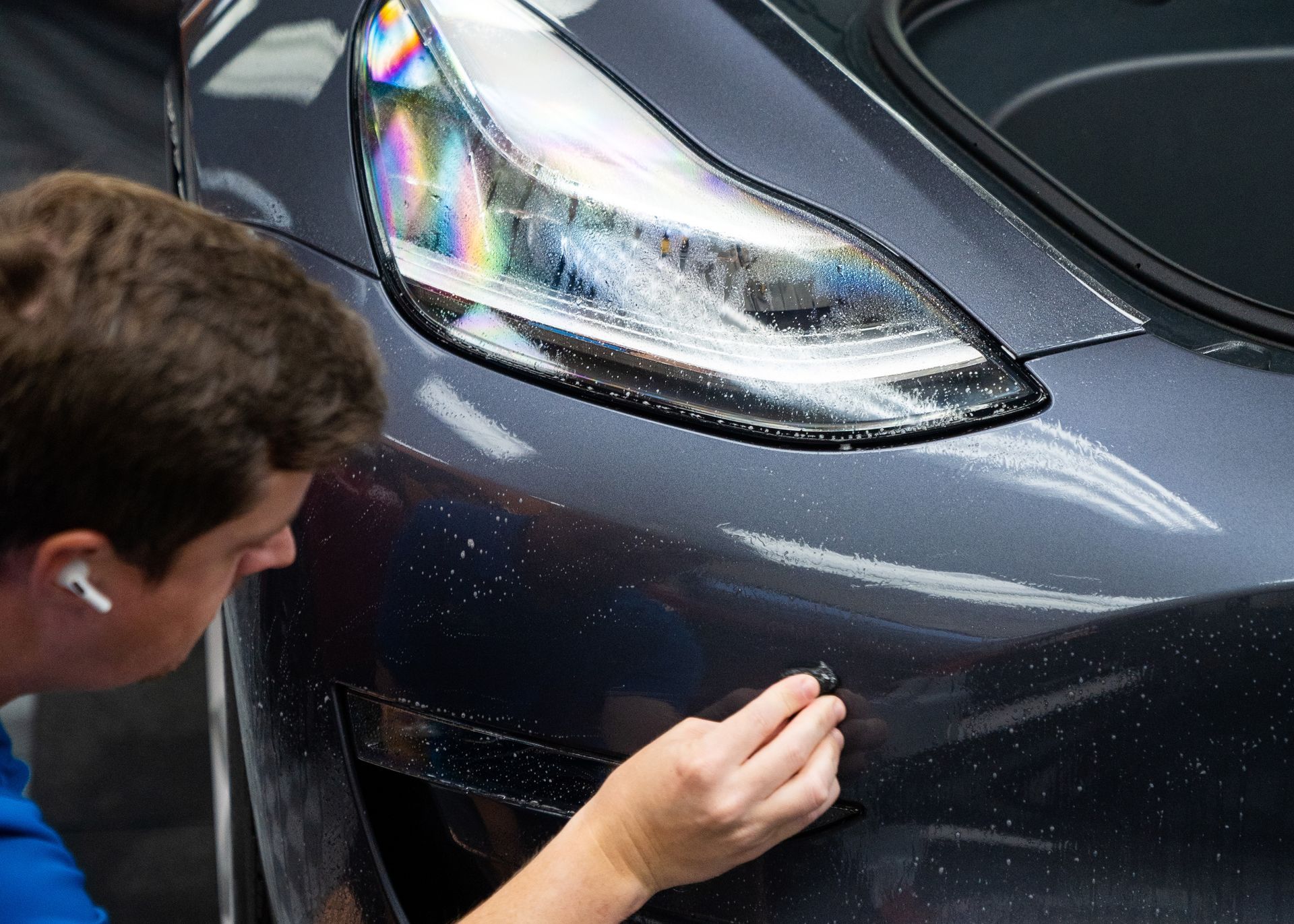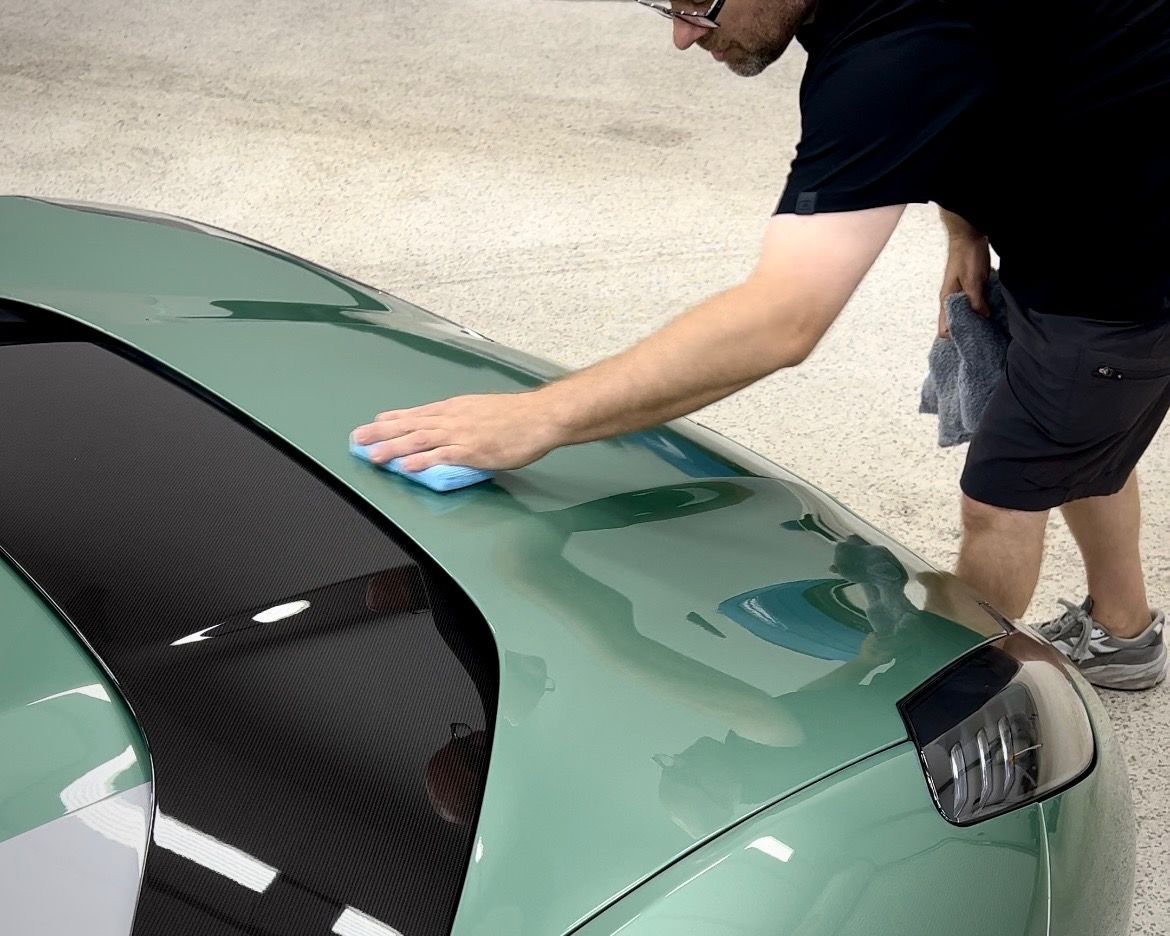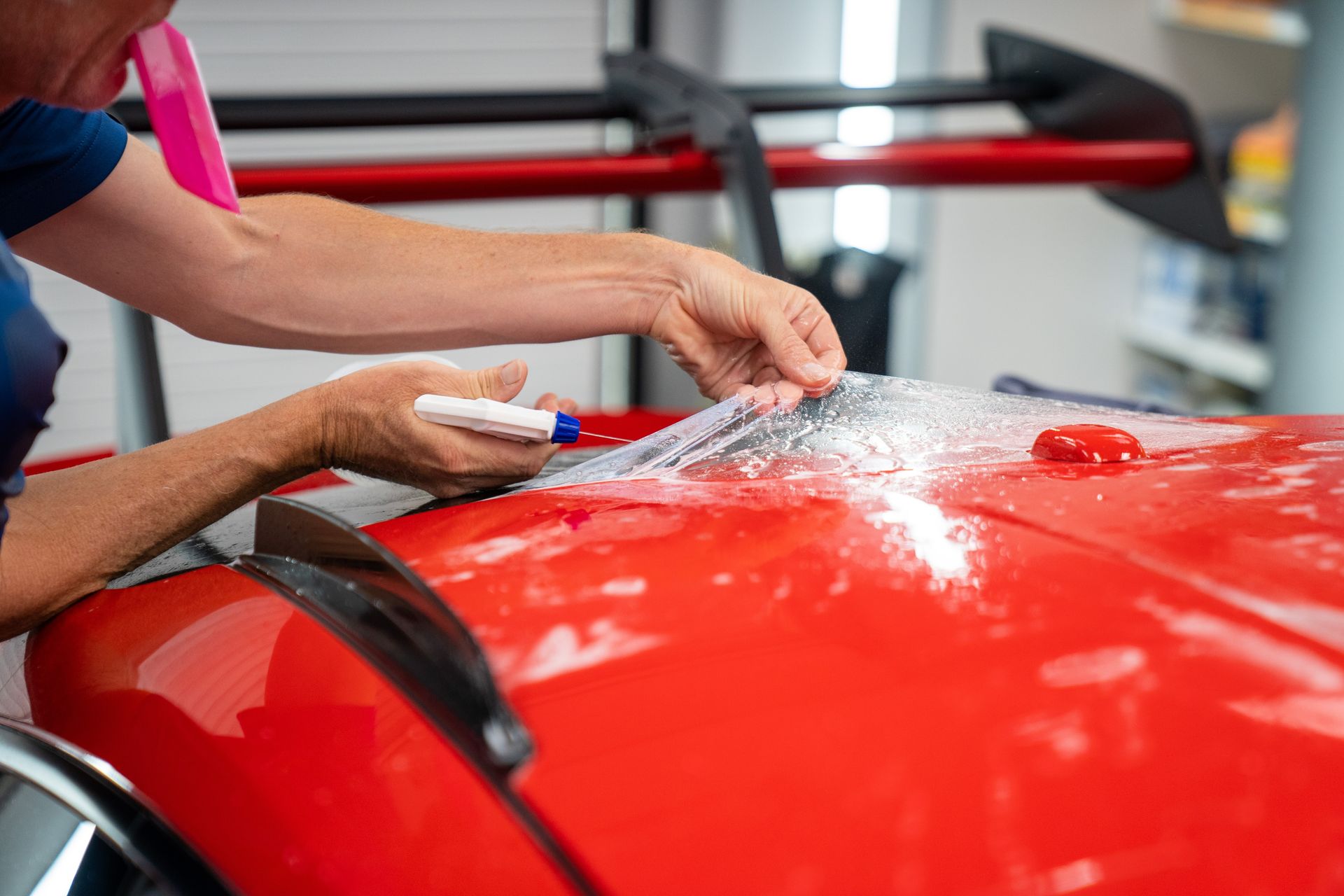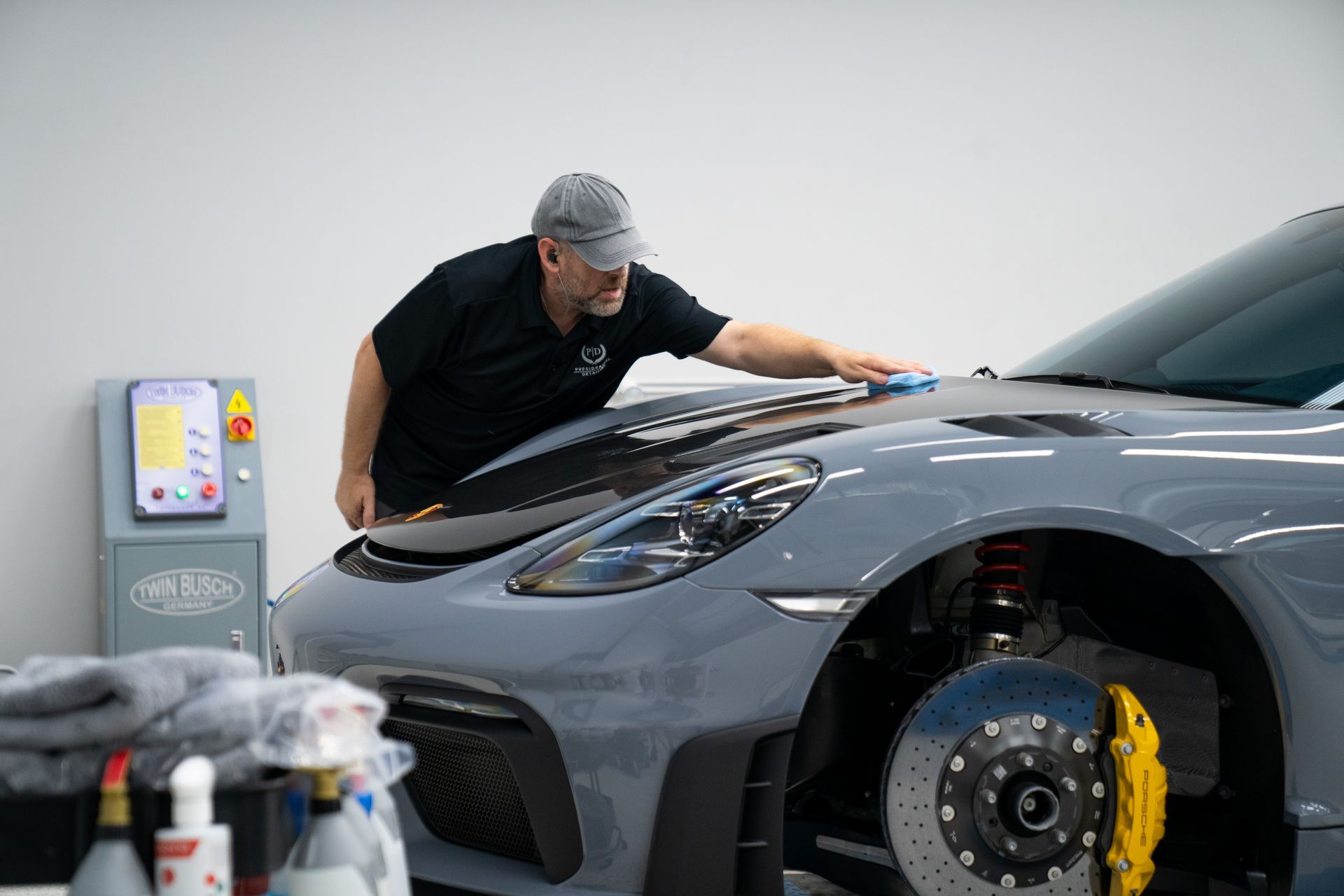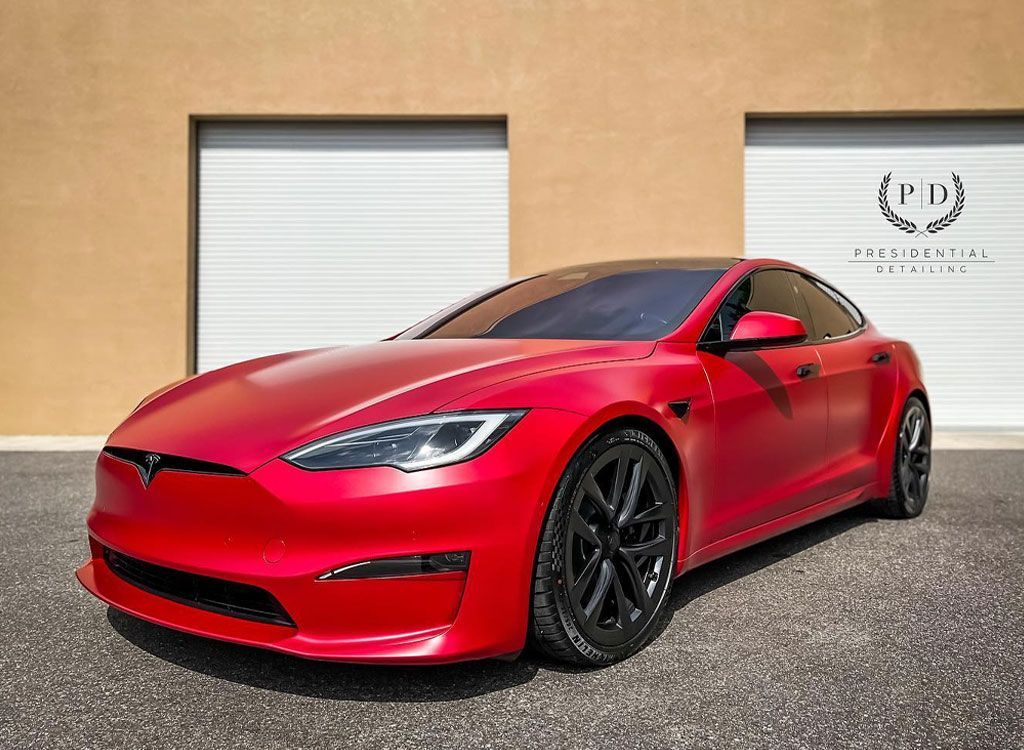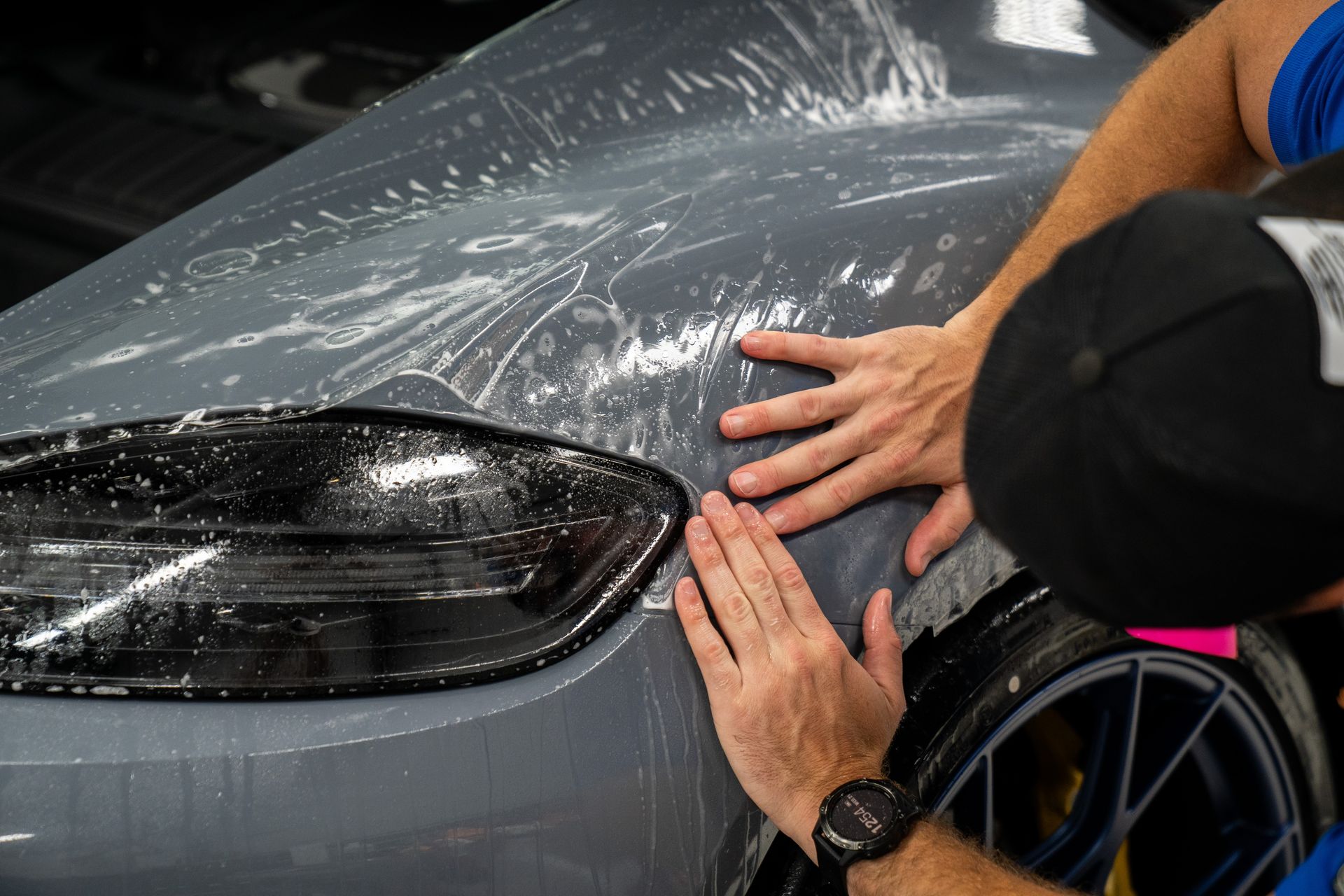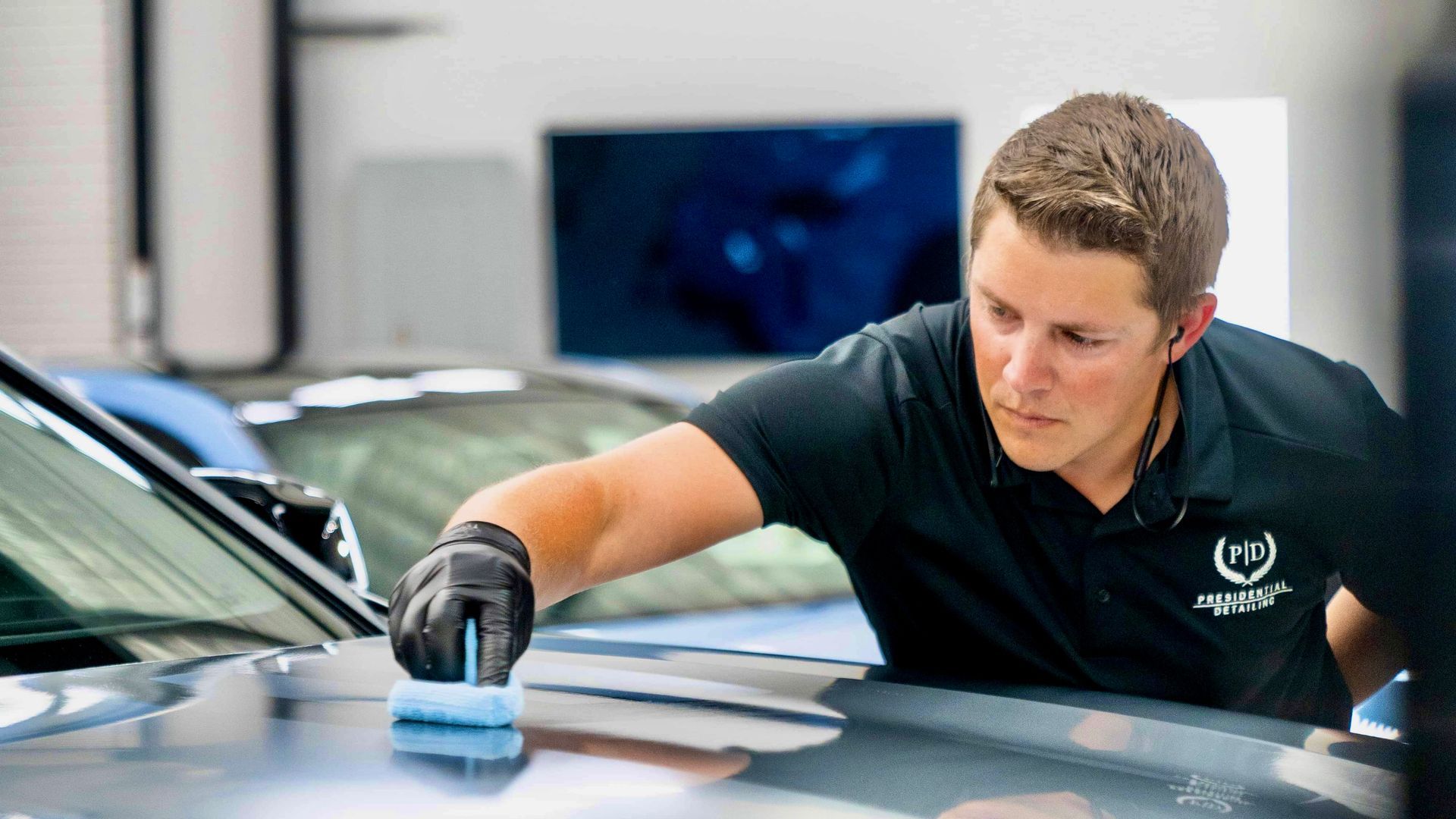Is Professional Paint Protection Film Installation Worth the Investment?
CALL (813) 723-9679
GET A FREE ESTIMATEIndeed, it is well worth investing in a professional paint protection film installation. Expertly applied paint protection film protects your car from things like UV rays and bird poop, keeping the car's exterior shiny and new. Plus, it can keep your car's resale value high, a fact often overlooked by many. And while the cost might seem high at first glance, remember that this one-time spend can save you lots more on fixes and touch-ups later.
Professional paint protection film installation is definitely worth the investment for vehicle owners looking to safeguard their cars from UV exposure, road debris, and environmental hazards. Opting for certified professionals ensures precise application, bubble-free finish, and long-term protection, ultimately enhancing the car's exterior condition and preserving its resale value.
Advantages of Professional PPF Installation
When it comes to safeguarding your vehicle, opting for professional paint protection film installation offers several distinct advantages over DIY methods. One of the foremost benefits is the enhanced protection it provides against a variety of elements that can degrade a vehicle's exterior over time. Professional paint protection film installation ensures comprehensive protection against UV exposure, which can cause paint to fade and deteriorate over time. Additionally, it guards the vehicle against road debris, bird droppings, and tree sap, all of which can cause significant damage to the paint and overall exterior. This level of protection not only maintains the appearance of the vehicle but also contributes to its long-term durability.
The preservation of resale value is another crucial advantage of professional paint protection film installation. By safeguarding the exterior condition of the vehicle, paint protection film plays a key role in maintaining its resale value. Potential buyers or those looking to trade-in their vehicles in the future are more likely to be attracted to a vehicle with preserved paint and exterior condition, making it a smart choice for long-term investment. Quality application is an essential aspect that sets professional PPF installation apart. Certified professionals possess the expertise and experience to ensure a bubble-free, precisely aligned fit for the paint protection film, providing superior material quality and application. This high level of precision and attention to detail not only enhances the overall effectiveness and longevity of the film but also elevates the aesthetic appeal of the vehicle.
Overall, when considering the comprehensive protection, preservation of resale value, and superior material quality and application offered by professional paint protection film installation, it becomes clear that the investment is not just about immediate benefits but also about long-term value and peace of mind.
Weighing Up the Investment: Cost and Time
When considering professional paint protection film installation, it's crucial to take into account the initial cost and time investment. While the upfront expense may give some pause, it's important to see the bigger picture. By evaluating both the immediate and long-term benefits, you can make an informed decision that works best for your budget and time.
Let's start by dissecting the cost consideration. Professional paint protection film installation may involve a significant upfront investment, but it's crucial to view this as a preventive measure against potential future expenses. By having a durable protective film in place, your vehicle is shielded from damage caused by scratches, debris, and weather elements. This significantly reduces the need for costly repairs and touch-ups down the line, ultimately offsetting the initial installation cost. Consider professional PPF installation as an insurance policy for your vehicle's exterior—paying now to prevent potential large expenses later.
Moreover, the longevity of high-quality paint protection film means that once installed professionally, it requires minimal maintenance over time. This can lead to substantial savings in the long run, making the initial cost a wise investment towards safeguarding your vehicle's appearance and value. It's akin to spending a little more on high-quality paint that lasts longer and requires fewer touch-ups over time. While it may seem like a larger investment initially, the reduced need for frequent repainting makes it more cost-effective in the long term.
It's understandable that individuals might be concerned about the duration of the installation process. However, professional PPF installation offers long-term benefits in terms of time savings and convenience. While the installation process may require some time initially, once it's complete, you'll reap the rewards of long-lasting protection that minimizes the need for frequent maintenance and touch-ups. Think of it as an upfront investment for long-term convenience. Instead of spending valuable time and effort on regular waxing or buffing out scratches, you'll enjoy an enduring shield that maintains your vehicle's sleek appearance with minimal upkeep.
In essence, while professional paint protection film installation may entail an initial cost and time commitment, it's vital to recognize that these are investments in long-term savings on maintenance costs and efforts. By carefully weighing up these factors, individuals can make an informed decision that aligns with their financial considerations and lifestyle preferences.
Quality Matters: Materials and Service in PPF
When it comes to paint protection film, there's no compromising on quality. Professional installation comes with a complete package of benefits, starting with the use of superior materials.
One of the key advantages of professional paint protection film installation is the utilization of high-quality materials. These films are engineered to be durable and resilient, offering a shield against various environmental stressors such as harsh UV rays, road debris, or gravel, ensuring long-term protection for your vehicle's paintwork. The quality of materials used in professional paint protection film installation also contributes to the aesthetic finish of the vehicle. These films are designed to maintain clarity and color vibrancy over time, preserving the original look of the vehicle while providing a layer of protection.
In addition to superior materials, one of the core benefits of professional paint protection film installation is the expert service provided by certified professionals who are trained to handle the application process with precision. Certified installers bring a wealth of experience and knowledge to the table, ensuring that every step is carried out with exacting standards. Their expertise plays a crucial role in minimizing the risk of imperfections during the installation process, resulting in a seamless finish without any blemishes or inconsistencies in the film application.
These professionals are equipped with the right tools and techniques needed for a flawless installation. They understand the intricacies of working with different types of vehicles and surfaces, allowing them to tailor the application process according to specific requirements. When it comes to professional PPF installation, quality truly reigns supreme. The utilization of superior materials coupled with expert service ensures that your vehicle receives not only durable protection but also a flawless finish that enhances its overall aesthetic appeal.
Understanding Warranties and Potential Damage Handling
When you invest in professional paint protection film installation for your vehicle, you are not only safeguarding its exterior but also gaining the added advantage of warranties and protection. These warranties provide peace of mind to vehicle owners, ensuring coverage against everyday wear and tear as well as potential damage to the film itself. This means that any manufacturing defects or issues with the film's performance will be covered under these warranties, offering reassurance to car owners. Warranties for paint protection film installation often vary based on the type of film used, the installer, and the level of coverage provided. Some PPF installations come with warranties that last up to 10 years, providing an extended period of protection for your vehicle's paint. It's important to carefully review and understand the terms and conditions of the warranty to ensure that you are aware of what is covered and any maintenance requirements needed to maintain the warranty.
Additionally, professional installers are equipped to handle any potential damage to the paint protection film. Whether it's due to rock chips, scratches, or other road debris, these experts can address such issues by providing repair or replacement options as needed. This level of expertise and service provides added assurance to vehicle owners that their investment is protected. While some may argue that self-installation of paint protection film could save money, it’s essential to recognize the benefits of professional installation, which include expert handling of potential damages. The comprehensive warranties provided with professional paint protection film installation offer extended coverage against various types of damage, ensuring a high level of protection that exceeds typical DIY applications.
The Installation Process Unveiled
Installing paint protection film is a meticulous task that involves several crucial steps to ensure the best possible outcome for your vehicle. The foundation of a successful installation lies in the thorough preparation of the vehicle's surface, ensuring that the film adheres seamlessly while preserving the vehicle's aesthetics.
- Surface Preparation: Surface preparation commences with a meticulous cleaning process to remove any dirt, debris, or contaminants from the vehicle's exterior. This step promotes optimal adhesion and guarantees a seamless finish once the paint protection film is applied. Even the tiniest particle left on the surface can compromise the effectiveness of the PPF, highlighting the critical nature of attention to detail during this stage. Professionals use specialized cleaners and detailing tools to ensure that every nook and cranny of the vehicle's surface is free from impurities. A clean, smooth, and defect-free surface provides the ideal base for the application of film, ensuring a flawless result.
- Precise Application: Once the surface preparation is complete, certified professionals take over the precise application of the paint protection film. This step demands skill and expertise as they meticulously align and fit the film to the vehicle, considering every curve, contour, and design element to ensure a bubble-free and precisely aligned fit. Certified installers handle each piece of the film with care, ensuring that it seamlessly integrates with the vehicle's exterior without compromising its visual appeal. The precision required in this process resembles that of a skilled tailor creating a custom-fit suit – attention to detail is paramount.
- Quality Assurance: Throughout the entire installation process, meticulous supervision and quality assurance measures are implemented to uphold the highest standards of workmanship. This oversight ensures that every aspect of the installation meets rigorous quality standards, guaranteeing that the paint protection film is applied with the utmost precision, care, and attention to detail. Consider this stage as an art restorer meticulously preserving a priceless painting; every brushstroke must be flawless, and every detail must be scrutinized to maintain the integrity and beauty of the artwork. Similarly, professional paint protection film installation demands unwavering dedication to perfection at every step.
Verdict: Is Professional PPF Installation a Worthy Investment?
When it comes to making decisions about how to protect and preserve our vehicles, there's always a balance between cost and quality. The question arises: is the investment in professional paint protection film installation truly worth it? Let's weigh the factors and come to a conclusion.
One of the key benefits of professional PPF installation is its long-term protection. By safeguarding your vehicle from environmental hazards such as UV exposure, road debris, bird droppings, and tree sap, a paint protection film serves as a shield against everyday wear and tear. This means your vehicle maintains its pristine appearance for much longer, saving you the expense and hassle of frequent touch-ups and repairs. Additionally, preservation of resale value is another compelling reason to opt for professional paint protection film installation. Vehicles with PPF experience less wear on their exterior, which significantly enhances their value at trade-in or sale.
One factor that often gives vehicle owners pause is the initial investment and installation time involved in a professional paint protection film application. It's true that high-quality clear bra installation requires a financial commitment upfront, but this must be balanced against the long-term savings on maintenance costs. When you consider the reduced need for expensive repairs and touch-ups due to PPF's protective layer, the overall cost-benefit analysis clearly tilts in favor of professional installation. Moreover, the peace of mind that comes with warranties and comprehensive protection against everyday wear and tear cannot be overstated.
Partnering with certified professionals for a bubble-free, precisely aligned fit offers superior material quality and application. This ensures that your investment in paint protection film delivers tangible results in terms of both protection and aesthetics. The expertise of qualified professionals yields a flawless finish that enhances the surface of your vehicle and adds a layer of resilience. So, all things considered, professional PPF installation emerges as a strategic choice to preserve value, minimize maintenance costs, and enjoy peace of mind when it comes to protecting your vehicle.
Top-Tier Paint Protection Film Experts in Tampa, FL
Protect your vehicle with the unmatched expertise of Presidential Automotive Detailing,
the leading paint protection film specialists in Tampa, FL. Our skilled team uses cutting-edge technology to apply premium paint protection film, ensuring your car is safeguarded against scratches, chips, and environmental damage. Preserve your vehicle's pristine condition and enhance its longevity with our top-tier PPF services. Trust Presidential Automotive Detailing to deliver superior protection and flawless results. Schedule your appointment today and give your car the ultimate defense it deserves. Call us at
(813) 723-9679 to get started!
